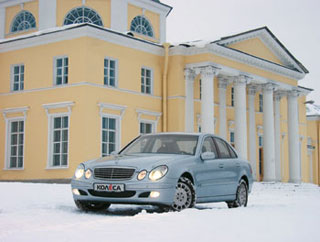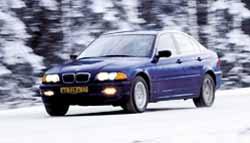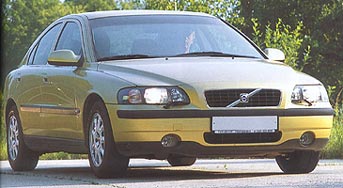Test drive Mercedes Benz C-class w203 2000-2004 sedan
The first Mercedes of the new era
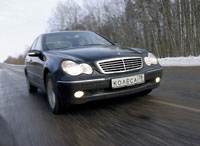 In recent years, the image of the Mercedes -Benz brand changes literally before our eyes. The best or in the worst is a matter of personal preferences; It can only be argued that these changes are due to the evolutionary development of the German company. By and large, it all started back in the late seventies with the advent of a station wagon with a body W123, followed by a compact 190 sedan and an all -wheel drive 4matic. Those models were first met by the public wary, but subsequently successfully fitted into the production program of the mop. The nineties brought with them a lot of new products, previously incompatible with the word Mercedes: in America and France, subsidiaries were opened in cars for the production of cars, light SUV and city single-volume cars entered the market, in-line six-cylinder engines gave way to V-shaped structures, and mechanical ones revived from non-being. Suppliers. It came to the holy of holy - the ideology of Mercedes -Benz cars, namely the sensations experienced from the control of the legendary brand machine. In the latter today, the company's product, class C models with the W203 factory index, focused most of these changes.
In recent years, the image of the Mercedes -Benz brand changes literally before our eyes. The best or in the worst is a matter of personal preferences; It can only be argued that these changes are due to the evolutionary development of the German company. By and large, it all started back in the late seventies with the advent of a station wagon with a body W123, followed by a compact 190 sedan and an all -wheel drive 4matic. Those models were first met by the public wary, but subsequently successfully fitted into the production program of the mop. The nineties brought with them a lot of new products, previously incompatible with the word Mercedes: in America and France, subsidiaries were opened in cars for the production of cars, light SUV and city single-volume cars entered the market, in-line six-cylinder engines gave way to V-shaped structures, and mechanical ones revived from non-being. Suppliers. It came to the holy of holy - the ideology of Mercedes -Benz cars, namely the sensations experienced from the control of the legendary brand machine. In the latter today, the company's product, class C models with the W203 factory index, focused most of these changes. 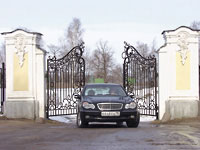 Let's start with the exterior. The closest style to the new compact class is the current S-Class, the car is slim and fit. Its features, transferred to a car of much smaller sizes, acquire almost sports character. Pay attention to the bend of a convex waist line arising from the hind wings of the lanterns or molding, which occurs on the front wings and smoothly expands to the rear bumper. Mirrors with turn signals integrated in them look very dynamic (in each of them we counted seven (!) Bulbs). It is not without reason that the Mercedes designers have a reputation not just by the masters of the ECTRA-Class, but by real legislators of automobile fashion. There was no doubt that they would be able to find the only true stylistic combination when the absolutely fresh machine remains a true Mercedes, and only to them. Thus, with all its rapidness (aerodynamic resistance coefficient, the record 0.26) C-Class is not at all devoid of thoroughness and respectability: the fully preserved branded proportions are inherited both massive body racks and the flexed headlight headlights. And all this is elegantly complemented by chrome lining on door handles, bumpers and moldings. On the front wing of the car, we find a nameplate with the inscription Elegance. Elegance is an intermediate equipment between Classic and Avantgarde, however, the machine shown in the photographs is so richly equipped that the package level can compete with Avantgarde.
Let's start with the exterior. The closest style to the new compact class is the current S-Class, the car is slim and fit. Its features, transferred to a car of much smaller sizes, acquire almost sports character. Pay attention to the bend of a convex waist line arising from the hind wings of the lanterns or molding, which occurs on the front wings and smoothly expands to the rear bumper. Mirrors with turn signals integrated in them look very dynamic (in each of them we counted seven (!) Bulbs). It is not without reason that the Mercedes designers have a reputation not just by the masters of the ECTRA-Class, but by real legislators of automobile fashion. There was no doubt that they would be able to find the only true stylistic combination when the absolutely fresh machine remains a true Mercedes, and only to them. Thus, with all its rapidness (aerodynamic resistance coefficient, the record 0.26) C-Class is not at all devoid of thoroughness and respectability: the fully preserved branded proportions are inherited both massive body racks and the flexed headlight headlights. And all this is elegantly complemented by chrome lining on door handles, bumpers and moldings. On the front wing of the car, we find a nameplate with the inscription Elegance. Elegance is an intermediate equipment between Classic and Avantgarde, however, the machine shown in the photographs is so richly equipped that the package level can compete with Avantgarde.  The door slammed with a noble sound is fenced off from the outside world, and immediately you feel immersed in a special world called Mercedes. The car interior is shamelessly luxurious-pale pendal skin, soft light brown plastic, wood inserts and a bit of chromium (for example, on the levers of deflectors). Light tones of delicate shades emphasize the wealth of decoration, at the same time giving the interior a feeling of lightness and airiness. Here you can really relax and forget about anxieties and problems. Just think, the sophisticated reader will say - such a set of expensive materials today can be ordered almost for any model. But there are two points that fundamentally distinguish the Mercedes salon from all other salons. First of all, the impeccable taste with which combinations of colors and textures are selected, then how skillfully and unobtrusively they distinguish characteristic design solutions like a two -story front panel. Secondly, the pronounced practical side of this luxury, paratite of function and shape. It is immediately obvious that the calculated ergonomics dressed in the leather-dererial covers, and not vice versa. That is why the interior of the car, with all its eastern chica, is completely devoid of chance.
The door slammed with a noble sound is fenced off from the outside world, and immediately you feel immersed in a special world called Mercedes. The car interior is shamelessly luxurious-pale pendal skin, soft light brown plastic, wood inserts and a bit of chromium (for example, on the levers of deflectors). Light tones of delicate shades emphasize the wealth of decoration, at the same time giving the interior a feeling of lightness and airiness. Here you can really relax and forget about anxieties and problems. Just think, the sophisticated reader will say - such a set of expensive materials today can be ordered almost for any model. But there are two points that fundamentally distinguish the Mercedes salon from all other salons. First of all, the impeccable taste with which combinations of colors and textures are selected, then how skillfully and unobtrusively they distinguish characteristic design solutions like a two -story front panel. Secondly, the pronounced practical side of this luxury, paratite of function and shape. It is immediately obvious that the calculated ergonomics dressed in the leather-dererial covers, and not vice versa. That is why the interior of the car, with all its eastern chica, is completely devoid of chance. 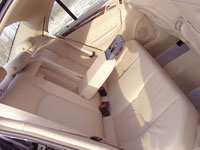 Electric drives control everything: numerous adjustments to the front seats, including even adjusting the headrests in height and angle of inclination. Adjusting the steering column in length and height. And, of course, windows and mirrors. It is also important that the ranges of all adjustments are very large - as a result, C -Class will not seem uncomfortable or uncomfortable for anyone. The seats themselves and the steering wheel do not leave much to be desired. By the way, the steering wheel here, as they say, is multifunctional: on its central part, the radio control buttons and the modes of the on -board computer are carried out. The steering wheel switches are located in the classic Mercedes style: there are two of them, and both are on the left. The small manages a cruise control, and the big is responsible for the wipers, the indicators of the turns and the switching between the near light and the distant. The dashboard is as original as it is well read: the most honorable place is the speedometer in the center of which is the computer display; And the tachometer and the level of the fuel level are attached to its sides. But the coolant temperature indicator is absent at all. True, later, after a trip by car, such an unequal position of the speedometer and tachometer seemed controversial.
Electric drives control everything: numerous adjustments to the front seats, including even adjusting the headrests in height and angle of inclination. Adjusting the steering column in length and height. And, of course, windows and mirrors. It is also important that the ranges of all adjustments are very large - as a result, C -Class will not seem uncomfortable or uncomfortable for anyone. The seats themselves and the steering wheel do not leave much to be desired. By the way, the steering wheel here, as they say, is multifunctional: on its central part, the radio control buttons and the modes of the on -board computer are carried out. The steering wheel switches are located in the classic Mercedes style: there are two of them, and both are on the left. The small manages a cruise control, and the big is responsible for the wipers, the indicators of the turns and the switching between the near light and the distant. The dashboard is as original as it is well read: the most honorable place is the speedometer in the center of which is the computer display; And the tachometer and the level of the fuel level are attached to its sides. But the coolant temperature indicator is absent at all. True, later, after a trip by car, such an unequal position of the speedometer and tachometer seemed controversial. 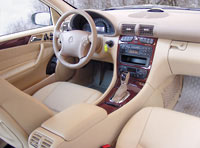 We will not bore you with a detailed description of the features of the work of the climate control - we will repeat once again that the algorithm for the work of this system, like all others, becomes clear from the first seconds. You generally get used to the car quickly and after a short time you feel in it as if you have it for more than one year. And without excellent music with Bose's acoustics, it seems nowhere now-even if the CD-changer ate a half-piercing box. And what is this indicator under the windshield? And one more on the ceiling above the heads of the rear passengers? These are Parktronic system sensors, indicating the distance to objects in front and back. They are automatically activated as they approach the obstacle, and the further reduction in the distance is accompanied by the sunbathing of new squares and the sound of a nibbler. It resembles the remote control of spaceships from films about the future.
We will not bore you with a detailed description of the features of the work of the climate control - we will repeat once again that the algorithm for the work of this system, like all others, becomes clear from the first seconds. You generally get used to the car quickly and after a short time you feel in it as if you have it for more than one year. And without excellent music with Bose's acoustics, it seems nowhere now-even if the CD-changer ate a half-piercing box. And what is this indicator under the windshield? And one more on the ceiling above the heads of the rear passengers? These are Parktronic system sensors, indicating the distance to objects in front and back. They are automatically activated as they approach the obstacle, and the further reduction in the distance is accompanied by the sunbathing of new squares and the sound of a nibbler. It resembles the remote control of spaceships from films about the future. 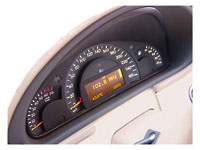 If Parktronic is an active safety tool, then four inflatable airbags are the central part of the passive safety complex. Moreover, the front pillows are adaptive, that is, they are revealed to varying degrees, depending on the severity of the collision. I surprised the scope in the back seat. I surprised because the direct ancestor of the car, Mercedes-Benz 190, did not indulge the rear passengers with comfort. And in the 203rd there are legs where to put, and the roof overhead does not hang. But it is better to sit from behind, it is still together - three will be crowded in the shoulders. The sofa is as convenient as the front seats, and is equipped with a folding armrest with retractable cup holders. The glasses of the doors completely go down - evidence that the engineers did not look for simple, half decisions. Of course, they were not limited by considerations of savings.
If Parktronic is an active safety tool, then four inflatable airbags are the central part of the passive safety complex. Moreover, the front pillows are adaptive, that is, they are revealed to varying degrees, depending on the severity of the collision. I surprised the scope in the back seat. I surprised because the direct ancestor of the car, Mercedes-Benz 190, did not indulge the rear passengers with comfort. And in the 203rd there are legs where to put, and the roof overhead does not hang. But it is better to sit from behind, it is still together - three will be crowded in the shoulders. The sofa is as convenient as the front seats, and is equipped with a folding armrest with retractable cup holders. The glasses of the doors completely go down - evidence that the engineers did not look for simple, half decisions. Of course, they were not limited by considerations of savings. 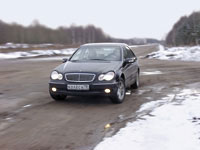 Another examples of excellent ergonomics? Please, trunk. The lower edge of its lid is deeply cut into the bumper - in order to minimize the loading height. From the inside, the lid is equipped with a loop, for which, with a certain dexterity, it closes in one appointment. And if it turned out that the volume of the cargo compartment is not enough to accommodate an oversized object, the back of the rear seat can be folded directly from the trunk. It is possible, but you can only one part. Under the hood of the subject is a 2.6 -liter V6 - the smallest six -cylinder engine installed on the Mercedes. And let you not be confused by the inconsistency of the liter and designation of the modification - from 240.
Another examples of excellent ergonomics? Please, trunk. The lower edge of its lid is deeply cut into the bumper - in order to minimize the loading height. From the inside, the lid is equipped with a loop, for which, with a certain dexterity, it closes in one appointment. And if it turned out that the volume of the cargo compartment is not enough to accommodate an oversized object, the back of the rear seat can be folded directly from the trunk. It is possible, but you can only one part. Under the hood of the subject is a 2.6 -liter V6 - the smallest six -cylinder engine installed on the Mercedes. And let you not be confused by the inconsistency of the liter and designation of the modification - from 240. This is one of the nuances of the marketing policy of the Germans: for example, with 180 there is a two-liter engine, and from 200 CDI is equipped with a 2.2-liter diesel engine. This is done in order to distinguish modifications with the same volumes of engines, but of different power. The 170 -horsepower engine brings the rear - as it should be a Mercedes - wheels through a five -dyapasic automatic transmission with an adaptive algorithm of operation and the possibility of sequential gear shifts. And, of course, there are plenty of electronics on C-class. Consider: anti -lock system, ASR anti -circus system, Brake Assist brake force distribution system and ESP dynamic stabilization system. With a leisurely driving with 240, almost all the Mercedes habits shows: the machine is softly fingering the speed, not tiring with excessive switching, which indicates a remarkable torque of the engine, the car responds smoothly, even imposingly to turn the steering wheel. And we almost applied the term because of the specific, so to speak, smoothness: the level of vertical accelerations transmitted to the body is higher than we would like, and the driver and passengers will learn more about the condition of the road than the driver and passengers of the machine with a three-beam star on Kapote.
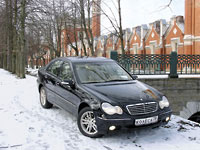 Let's try to go faster. The car is suddenly transformed - the reactions to the actions of the steering wheel filled with feedback become lightning and accurate (as it turned out, this is a direct consequence of the abandonment of the steering mechanism such as a screw - a ballpoint in favor of the rack). As soon as he mare, the car willingly dies in corners, and soon the driver has something like excitement. Moreover, ESP in the germ of the drifts and side slides strangles. I want more speed, more turns, but here the gearbox is already starting to interfere. A smart machine honestly tries to adapt to the driving driving style, however, in response to sharp adding gas, it falls into confusion and only a couple of moments later finds one of the lower gears. There is a way out - manual checkpoint. Now, by swinging the lever to the right and left, you can switch the programs yourself and fully enjoy the even and confident traction of the engine in the entire speed range.
Let's try to go faster. The car is suddenly transformed - the reactions to the actions of the steering wheel filled with feedback become lightning and accurate (as it turned out, this is a direct consequence of the abandonment of the steering mechanism such as a screw - a ballpoint in favor of the rack). As soon as he mare, the car willingly dies in corners, and soon the driver has something like excitement. Moreover, ESP in the germ of the drifts and side slides strangles. I want more speed, more turns, but here the gearbox is already starting to interfere. A smart machine honestly tries to adapt to the driving driving style, however, in response to sharp adding gas, it falls into confusion and only a couple of moments later finds one of the lower gears. There is a way out - manual checkpoint. Now, by swinging the lever to the right and left, you can switch the programs yourself and fully enjoy the even and confident traction of the engine in the entire speed range. 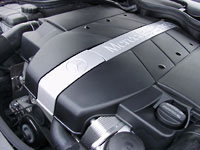 Incidentally, only the sound of a motor that exceeded 4000 rpm, and the light rustle of the tires turned out to be the only sounds that could break through the armor of sound insulation. With such an arsenal, it becomes possible to storm the turns with the ESP system disconnected - there is no concern that the machine will decide to switch at the most inopportune moment. Since C-SLASS provokes active driving, let him completely show what he is capable of. Alas, on dry asphalt it is impossible to cause a skid - the kinematics of pendants are so perfect and the clutch properties of the tires are good. On a contaminated coating with a sharp press on the accelerator pedal (still flooring!) It is possible to tear off the rear wheels into the skid, but insignificant. The discharge of gas with the simultaneous correction of the steering wheel leads to the fact that, having allowed a weak counteratus, the Mercedes gracefully returns to a straightforward trajectory. Returns without committing a single unpredictable action. Finally - about the brakes. To say that their mechanisms are effective is to say nothing. They convincingly demonstrate their power and with a calm slowdown, and with a sharp press on the brake pedal, the Brake Assist system is activated, and the car stops as dug, bringing panic into the ranks of the following behind. The only thing you have to regret is the insufficient information content of the pedal, since such brakes need the possibility of jewelry dosage of effort.
Incidentally, only the sound of a motor that exceeded 4000 rpm, and the light rustle of the tires turned out to be the only sounds that could break through the armor of sound insulation. With such an arsenal, it becomes possible to storm the turns with the ESP system disconnected - there is no concern that the machine will decide to switch at the most inopportune moment. Since C-SLASS provokes active driving, let him completely show what he is capable of. Alas, on dry asphalt it is impossible to cause a skid - the kinematics of pendants are so perfect and the clutch properties of the tires are good. On a contaminated coating with a sharp press on the accelerator pedal (still flooring!) It is possible to tear off the rear wheels into the skid, but insignificant. The discharge of gas with the simultaneous correction of the steering wheel leads to the fact that, having allowed a weak counteratus, the Mercedes gracefully returns to a straightforward trajectory. Returns without committing a single unpredictable action. Finally - about the brakes. To say that their mechanisms are effective is to say nothing. They convincingly demonstrate their power and with a calm slowdown, and with a sharp press on the brake pedal, the Brake Assist system is activated, and the car stops as dug, bringing panic into the ranks of the following behind. The only thing you have to regret is the insufficient information content of the pedal, since such brakes need the possibility of jewelry dosage of effort. So it seemed to us, the first Mercedes-Benz of the new era. It remains to answer the latter question: is this car of fifty thousand dollars, given that you are now paying not only for name, prestige and comfort, but also for extraordinary running qualities?
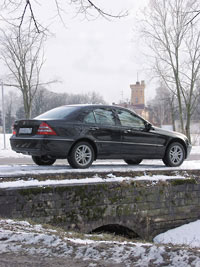
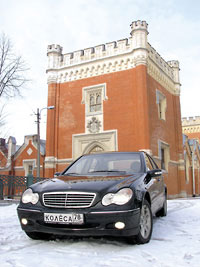
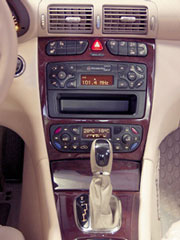
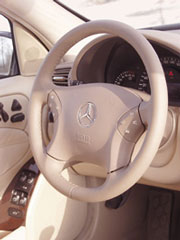
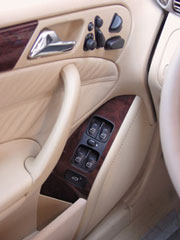
Source: Wheel magazine [No. 47/2001]
Video crash tests Mercedes Benz C-class w203 2000-2004
Test drives Mercedes Benz C-class w203 2000-2004
Crash Test Mercedes Benz C-class w203 2000-2004
Krassh Test: Detailed Information31%
Driver and passengers
12%
Pedestrians








